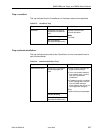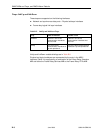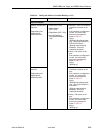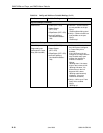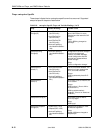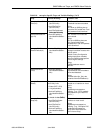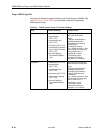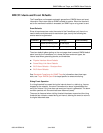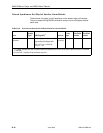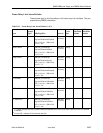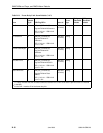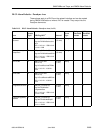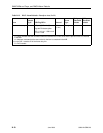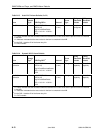
SNMP MIBs and Traps, and RMON Alarm Defaults
B-15
9820-A2-GB20-20
June 2000
RMON Alarm and Event Defaults
The FrameSaver unit supports automatic generation of RMON alarm and event
information. Each alarm sets an SNMP variable to monitor. When the threshold
set for the monitored variable is exceeded, an SNMP trap or a log event is sent.
Event Defaults
Since all events sent are under the control of the FrameSaver unit, there is no
need to define multiple events for each alarm type, so only the following two
events need to be generated:
eventIndex
eventDescription eventType eventCommunity
1 Default SLV Rising Event log-and-trap(4) 0
2 Default SLV Falling Event log-and-trap(4) 0
The alarm default tables starting on the next page show how each RMON default
alarm is set by the FrameSaver unit, shows the alarm and event types, the
interval used when generating alarms, and thresholds.
H
Physical Interface Alarm Defaults
H
Frame Relay Link Alarm Defaults
H
DLCI Alarm Defaults – Paradyne Area
H
DLCI Alarm Defaults
See
Standards Compliance for SNMP Traps
for information about how traps
work, and
Traps: RMON-Specific
for traps specific to remote monitoring.
Rising Event Operation
If a rising threshold is crossed during the interval shown in a table (e.g., frames
dropped by the network), the event is armed and an alarm is generated at the
end of the interval. Only one alarm per event per interval is generated. The alarm
condition persists until the event has been disarmed (reset).
The event is disarmed when a falling threshold has been crossed and the rising
threshold has not been crossed during an interval, allowing the event to return to
its original disarmed state.



